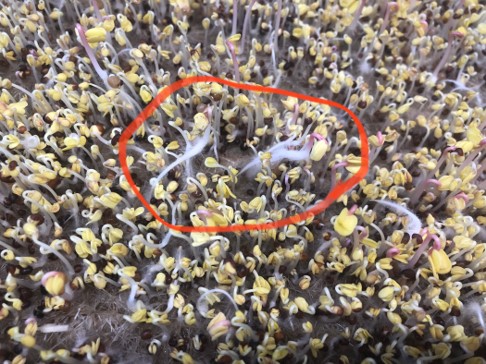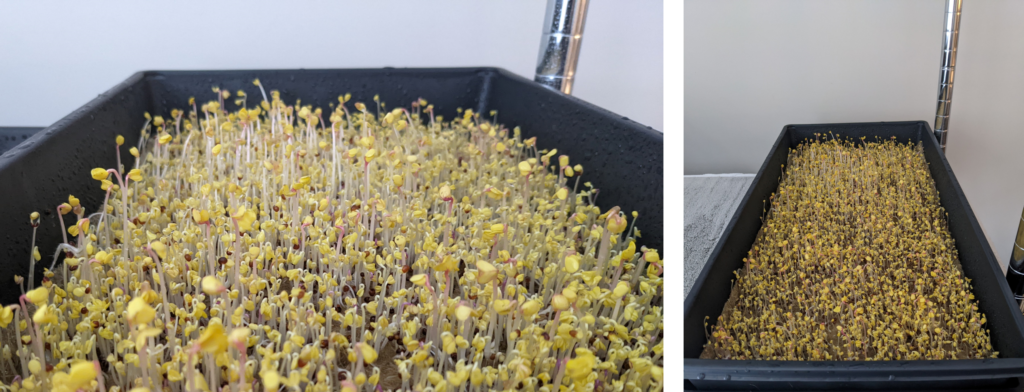We are pleased to provide this Grow Tips section to help fellow student farmers cultivate safe and healthy crops. These are “mission critical” tips for your success.
Topic: Germination of Microgreen Seeds
Germination is the key starting point for your microgreen cultivation, so getting it right from the beginning is imperative for your farming process from seed to harvest.
Question from a first-time student farmer: During the germination process is it normal to have white fuzz?

Answer from one of our StudentFarmers.org (SFO) Mentors: This is a great example of where we’re going to start using the SFO Forum and continue to build a mentor network for coaching. The white fuzz is most likely root hairs. “Root hairs are a part of the root system, reaching out looking for water and nutrients to deliver to the growing plant…The hairs are distinct and growing in the same direction (out from the root)…At first glace, the root hairs may be so dense that they look like mold… If you water from the bottom of the tray and do not actually wet the root hairs, they will not disappear….So go ahead and make sure you get them wet to see them disappear…. Spray or gently water your microgreens from the top. If they are root hairs, the white fuzzy look will disappear. ” Source: https://www.quantummicrogreens.com/blog-1/mold-or-root-hairs-on-microgreens.
When I first stated growing microgreens in 2021, I did not have the double tray system with the upper tray that had small drainage holes. I was watering the microgreens in the trays grooves from underneath the hemp grow matt. I learned that this created a risk of developing mold, which is why I shifted to a double tray system. At that earlier time, I noticed extensive root hairs. Spraying then in the morning and evening eliminated the visual root hairs, because when they are wet you don’t see them. Note that you are at risk of mold generating during germination or vegetation if the microgreens don’t have enough ventilation or if the air temperature is too high above 70° Fahrenheit (F).

Follow up answer from the SFO Mentor: My setup (above) is cooler than most high school student’s homes or college student’s dorms/apartments. Mold can develop if the temperature is 70° or higher. I have my microgreens in an area that is 69°. I’m thinking if it is a little bit of mold that developed on your microgreen germination tray, it could be due to the air temperature that your parents have set the thermostat at your house. Many people keep their houses between 70° and 72°. You may have a basement, closet or room in your house that is cooler than 70°, perhaps on the northers side or an area that is not too close to one of the heating, ventilation, and air conditioning (HVAC) supply ducts.
I included photos (above) of mine that were set at exactly the same germination schedule and moisture as the germination set up that I gave you. Mine don’t have any signs of the white fuzz. When you move your tray, if the room is dark enough, you can take the lid off to get some air circulation. At very least, you can take the lid off at night. For yours, if spraying them now does not eliminate the white fuzz then you could pick it off and hopefully it won’t spread if it were a little tiny bit of mold.
Here’s a link with good information relative to temperature: “Mold specifically loves moisture, and a temperature above 70 degrees Fahrenheit will encourage rapid growth. When air is stagnant, mold spores can settle and colonize because they’re no longer being consistently moved through the air.” Source https://donnygreens.com/blogs/microgreens-business/what-actually-causes-microgreens-mold-the-truth